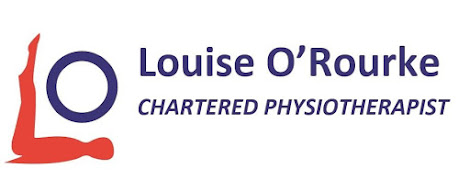|  |
|
Symptoms |
Understanding the symptoms of a hamstring strain can help you get the right treatment at the right time. Typical symptoms of a hamstring strain may include: |
 |
The pain you feel can range from mild to severe, and the exact location of symptoms may vary from person to person. If you suspect you have a hamstring strain, you should get to your doctor right away to start on the proper treatment. |
Causes |
Symptoms of a hamstring strain may come on suddenly, typically as the result of a quick motion that occurs with running or cutting maneuvers while participating in sports. Occasionally, you can suffer a hamstring strain by simply moving the wrong way while getting up from a chair or while walking and running. So what is going on with your hamstring muscle when you have a strain? The muscle or muscle-tendon interface is actually suffering from a tear. The collagen fibers that make up your muscle pull apart, and bleeding into the tissue may occur. |
 |
Your body then immediately goes into “repair mode” using the inflammatory process. This process involves: Bleeding into the injury site to bring in cells to clean up the area and become healthy collagen. Formation of scar tissue bridges that will one day become healthy muscle and tendon tissue. Remodeling of that collagen tissue to become normal, healthy hamstring muscle tissue. You can help the repair process along by doing the right things—at the right time—to get your hamstring moving and functioning properly. |
First Step to Recovery |
If you suspect you have a torn hamstring, you should take some initial steps to get going on the path to recovery. These may include: Don't panic. Hamstring strains, although painful, are not typically dangerous. Visit Physiotherapist to start treating the pain and to start working on restoring your normal mobility. Avoid aggravating activities that can cause pain or prevent normal tissue healing of your hamstring.
By starting the right things at the right time, you can safely regain your mobility and get back to your normal activities. |
|
5 Simple Stretches for Tight Hamstrings1. The Simple Hamstring Stretch |
Sit on the floor with both legs out straight. Extend your arms and reach forward by bending at the waist as far as possible while keeping your knees straight. Hold this position for 15 to 30 seconds. Relax back into the starting position. Repeat three times.
Be sure to stretch until a gentle pull is felt in the back of your thighs. If you feel any excessive pain, you should stop the exercise. |
 |
***If you have low back pain or sciatica, this exercise may place a strain on your back, so proceed with caution.*** |
2.The Hurdler Hamstring Stretch |
The hurdler hamstring stretch is a simple exercise that can be done right on the floor. Sit on the floor with one leg out straight. Bend the other leg at the knee and position the sole of that foot against your opposite inner thigh. Extend your arms and reach forward over the one straight leg by bending at the waist as far as possible. Hold this position for 10 seconds. Relax. Repeat with the other leg.
|
 |
Standing Hamstring Stretch (Both Legs at Once)
The next hamstring stretch is a simple one to do anywhere at all. It is done in the standing position and stretches both legs at once. Here is how you do the standing hamstring stretch: Stand and cross your right foot in front of your left. Slowly lower your forehead to your right knee by bending at the waist. Keep both knees straight. Hold this position for 15 to 30 seconds. Relax. Repeat for the other side by crossing your left foot in front of your right.
|
 |
4.Standing Hamstring Stretch (One Leg at a Time)The one-legged standing hamstring stretch is quite possibly the easiest hamstring stretch to do. It can be done anywhere—home, office, or outdoors—and it requires no special tools. Here is how you do it: Stand up straight with one heel resting on a small stack of books or stool. If you are outside, you can use the curb, but be sure to watch for cars. Keep your knee straight. Reach both arms up toward the place where the wall and ceiling meet. If you are outside and there is no wall or ceiling, simply reach up into the air so your arms are about even with your ears. Reaching your arms up, as opposed to reaching down toward your foot, will keep your back straight. Keep your back straight. You should be bending forward slightly from your hips. Reach forward and feel a stretch in your hamstring behind your thigh. Hold the stretch for 15 to 30 seconds, and repeat three times. Switch legs and repeat with the other leg.
|
 |
5.The Towel Hamstring StretchThe towel hamstring stretch is a simple one to do. Here's how: Lie on the floor on your back. Loop a long bath towel around your toes and hold the ends of the towel in both hands. Slowly pull on the towel to lift your straight leg up. Be sure to keep your knee straight. The leg without the towel should remain flat on the ground. Bring your leg up until a stretch is felt behind your thigh. You may also feel a stretch in your calf. This is normal. Hold for 15 to 30 seconds, and then relax. Repeat three to five times on each leg.
Remember that the towel hamstring stretch should feel good as you are doing the exercise; if it causes pain, stop immediately and check in with your physiotherapist. |
|
|











Comments
Post a Comment